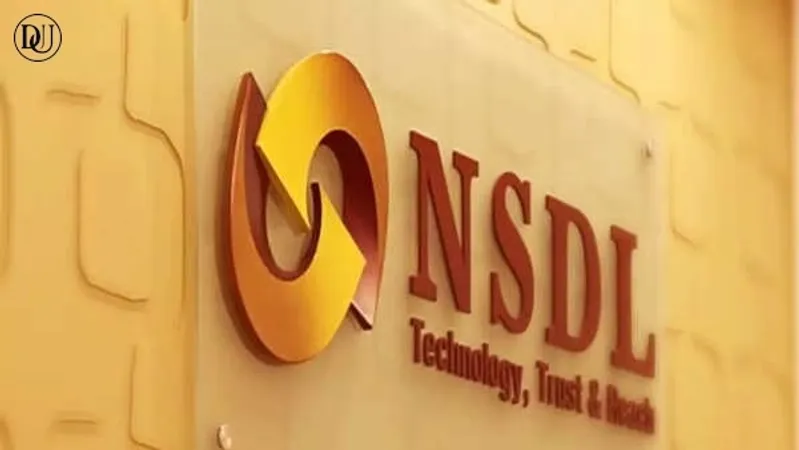There's this weird tension that hangs in the air when you're waiting for an IPO allotment status, isn't there? Like, with NSDL recently—it just popped into my head how intense that waiting game can be, especially at odd hours. You apply, you wait, and then you're basically glued to your screen trying to figure out if you actually got shares or if it's back to square one. It’s not just about the money, I think, but also that little thrill of potentially being part of something new in the market. NSDL, being National Securities Depository Limited, holds a pretty significant position in India’s financial infrastructure. They are, after all, one of the two main depositories that hold securities electronically. So, their IPO was a big deal for a lot of people, myself included, if I’m being honest.
Allotment Status: What's the Big Deal? 🤔
Honestly, it's pretty straightforward, but the process can feel a bit opaque if you haven't done it before. Basically, when a company like NSDL goes public through an Initial Public Offering, they offer shares to the public for the very first time. More often than not, especially with high-profile names, these IPOs get way oversubscribed. That means way more people want shares than are actually available. So, they have to do an allotment—a fancy word for distributing the shares. For retail investors, this usually happens via a lottery system. Everyone who applies stands an equal chance for a minimum lot, provided the application is valid. NSDL's IPO was, like many, heavily subscribed, particularly by qualified institutional buyers (QIBs) and high net-worth individuals (HNIs), which just makes the retail allotment even tougher to crack. You know, that's why everyone rushes to check their NSDL allotment status the moment it's announced. It’s truly the moment of truth for applicants.
Checking Your Luck: The How-To 🧐
Figuring out if you got lucky isn't too complicated, but there are specific places to look. The main ways are usually through the IPO registrar’s website or the BSE website. For NSDL, the registrar was MUFG Investor Services (sometimes it’s Link Intime or KFin Technologies for other IPOs, it varies depending on the IPO). I’ve found that the registrar's site is often the most direct route. You just punch in your application number, DP ID (Depository Participant Identification), or PAN card number, hit submit, and boom—your fate is revealed. The BSE website is another really reliable spot; you select the issue type, enter your application details, and there it is. It's surprisingly quick once you know where to go. Could be wrong, but I always felt the registrar's site updates faster sometimes. Just a personal observation. And getting that "allotted" status feels pretty good, I imagine, even if it's just one lot.
GMP: The Buzz Before the Bell 📉
Now, the Grey Market Premium, or GMP, is a whole other beast that plays into this. It's not official, mind you, and it operates outside the regulated stock exchanges, but it's a huge indicator of what people expect the stock to list at, compared to the IPO price. It’s essentially how much people are willing to pay for shares even before they start trading on the official exchanges. For NSDL, the GMP was, like, around 15% at one point, according to some reports. That's a decent premium, suggesting a good listing gain for those lucky enough to get shares. But here’s the thing—GMP can swing wildly. It’s influenced by market sentiment, demand, and honestly, sometimes just pure speculation. It can plunge right before listing, making those initial predictions look totally off. It’s a barometer, not a guarantee. You've got to take it with a grain of salt, always. It’s more of a market rumor mill than hard data, but it does influence perception.
Why Some Get It, Others Don't 🤞
It really boils down to oversubscription, especially in the retail category. If an IPO like NSDL’s is subscribed, say, 10 times over in the retail category, it means for every 10 applications, only one might get an allotment. It basically turns into a lottery. So, even if you apply for the maximum allowable amount, you might only get the minimum lot, or even nothing at all if your name isn’t picked in the draw. High Net-worth Individuals (HNIs) also get a chunk, but their allotment process is slightly different, usually pro-rata, meaning they get shares proportionate to their application size if they apply for substantial amounts. Then you have the big institutional guys, Qualified Institutional Buyers (QIBs), who get the largest portion, generally. Their interest often signals confidence in the company, which in turn influences retail demand. It's a bit of a cascade effect, honestly. That’s why sometimes even if you apply for multiple lots, you might just get one, or none at all. Is that really surprising given the frenzy these days for promising IPOs?
Beyond Allotment: Listing Day & What's Next 🗓️
Getting the allotment is just step one. The real action starts on the listing day. This is when the shares actually start trading on the stock exchanges, like BSE or NSE. For NSDL, the listing date was a significant event for those who got shares. That's when your investment truly becomes liquid, and you can either sell for a profit (if it lists higher than the IPO price) or hold on for long-term gains. Many people, especially those chasing quick listing gains, will sell on day one if the stock pops. Others might hold on, thinking about the company's long-term prospects. NSDL, being a major securities depository in India, definitely has that underlying stability, I guess. It plays a crucial role in the dematerialization and settlement of securities, which is a pretty fundamental part of the financial market. But then again, market dynamics… they're always unpredictable, no matter how solid the underlying company.
The Wider Picture: Patience and Perspective 🧘
Honestly, this whole IPO game—it's a test of patience, isn't it? From applying, waiting for the allotment status, tracking GMP, and then finally the listing day, it's a journey. Sometimes you win, sometimes you don't. I've noticed people get really hung up on missing out on a hot IPO, but there's always another one around the corner. Investing, especially in the stock market, is a long game. NSDL was just one opportunity. It's crucial to remember that while the excitement of an IPO is real, it's just one tiny part of a much larger investment landscape. Don't put all your eggs in one basket, you know? Diversification is key. Always do your own research beyond just the hype. And never invest more than you can afford to lose, obviously. Just a thought that popped up, thinking about all those eager applicants at 2 AM. It's fascinating how a seemingly small financial event can generate so much anticipation.










